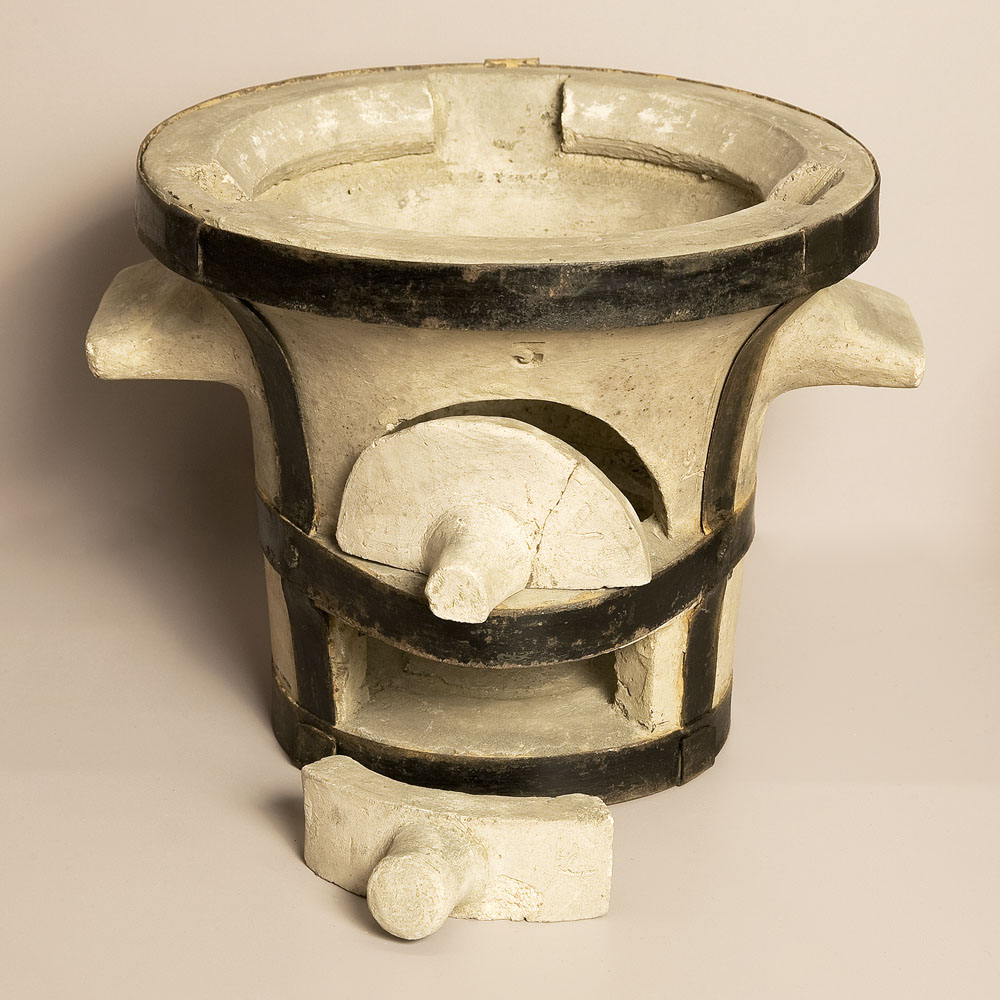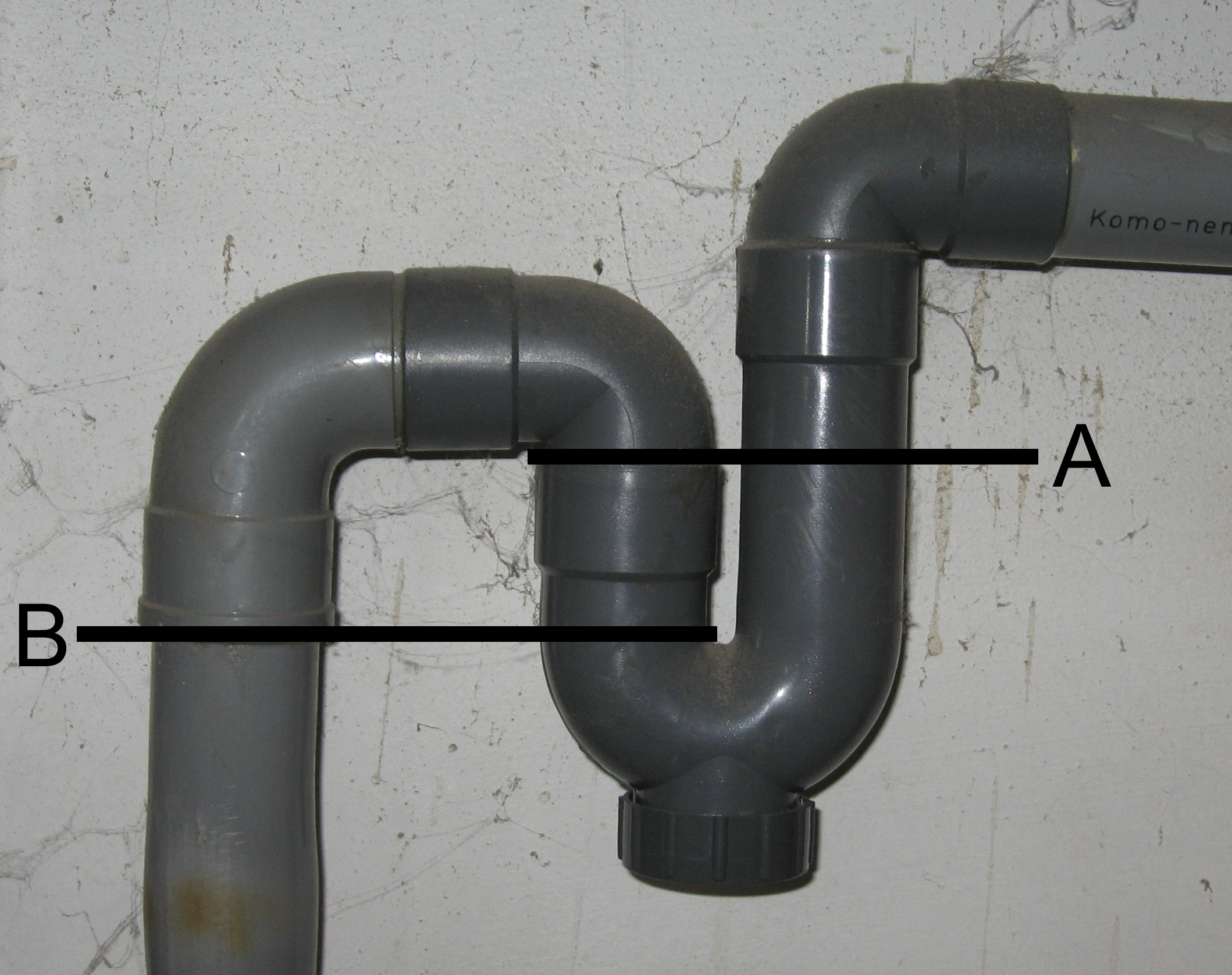|
Buchan Trap
A Buchan trap (alternative names: ''Bristol interceptor'', ''interceptor trap'' and ''disconnecting trap'') is a device made from fireclay located in a domestic sewer pipe to prevent odours entering the pipe from the public sewer and thus the property served by the drain. The trap uses a water seal to prevent air from the public sewer entering the property. In the days before individual plumbing fittings were separately trapped, the smell from the public sewer could permeate the house. Waste flows from the house through a U-bend in the trap. This means that there is always water in the pipe preventing the passage of anything from the other direction. The device is a large clay U-bend with an air-inlet/access point on the 'house' side. It is located below the ground level, but can be accessed through the air-inlet and sometimes a rodding hole. Blockage risk The Buchan trap will collect solids, sludge and waste that is not in suspension. In recent times, non-paper based wipes hav ... [...More Info...] [...Related Items...] OR: [Wikipedia] [Google] [Baidu] |
Fireclay
Fire clay is a range of refractory clays used in the manufacture of ceramics, especially fire brick. The United States Environmental Protection Agency defines fire clay very generally as a "mineral aggregate composed of hydrous silicates of aluminium (Al2O3·2SiO2·2H2O) with or without free silica." Properties High-grade fire clays can withstand temperatures of 1,775 °C (3,227 °F), but to be referred to as a "fire clay" the material must withstand a minimum temperature of .Minerals Zone, World Mineral Exchange. Retrieved 2011-6-23. Fire clays range from ''s'' to ''plastic fire clays'', but there are ''semi-flint'' and ''semi-plastic'' fire clays as well. Fire clays consist ... [...More Info...] [...Related Items...] OR: [Wikipedia] [Google] [Baidu] |
Sewerage
Sewerage (or sewage system) is the infrastructure that conveys sewage or surface runoff (stormwater, meltwater, rainwater) using sewers. It encompasses components such as receiving drainage, drains, manholes, pumping stations, storm overflows, and screening chambers of the combined sewer or sanitary sewer. Sewerage ends at the entry to a sewage treatment plant or at the point of discharge into the Natural environment, environment. It is the system of pipes, chambers, manholes, etc. that conveys the sewage or storm water. In many cities, sewage (or municipal wastewater) is carried together with stormwater, in a combined sewer system, to a sewage treatment plant. In some urban areas, sewage is carried separately in sanitary sewers and runoff from streets is carried in storm drains. Access to these systems, for maintenance purposes, is typically through a manhole. During high precipitation periods a sewer system may experience a combined sewer overflow event or a sanitary sewer over ... [...More Info...] [...Related Items...] OR: [Wikipedia] [Google] [Baidu] |
Trap (plumbing)
In plumbing, a trap is a U-shaped portion of pipe designed to trap liquid or gas to prevent unwanted flow; most notably sewer gases from entering buildings while allowing waste materials to pass through. In oil refineries, traps are used to prevent hydrocarbons and other dangerous gases and chemical fumes from escaping through drains. In heating systems, the same feature is used to prevent thermo-siphoning which would allow heat to escape to locations where it is not wanted. Similarly, some pressure gauges are connected to systems using U bends to maintain a local gas while the system uses liquid. For decorative effect, they can be disguised as complete loops of pipe, creating more than one U for added efficacy. General description In domestic applications, traps are typically U, S, Q, or J-shaped pipe located below or within a plumbing fixture. An S-shaped trap is also known as an S-bend. It was invented by Alexander Cumming in 1775 but became known as the U-bend following t ... [...More Info...] [...Related Items...] OR: [Wikipedia] [Google] [Baidu] |
Tenement
A tenement is a type of building shared by multiple dwellings, typically with flats or apartments on each floor and with shared entrance stairway access. They are common on the British Isles, particularly in Scotland. In the medieval Old Town, in Edinburgh, tenements were developed with each apartment treated as a separate house, built on top of each other (such as Gladstone's Land). Over hundreds of years, custom grew to become law concerning maintenance and repairs, as first formally discussed in Stair's 1681 writings on Scots property law. In Scotland, these are now governed by the Tenements Act, which replaced the old Law of the Tenement and created a new system of common ownership and procedures concerning repairs and maintenance of tenements. Tenements with one or two room flats provided popular rented accommodation for workers, but in some inner-city areas, overcrowding and maintenance problems led to shanty towns, which have been cleared and redeveloped. In more affluen ... [...More Info...] [...Related Items...] OR: [Wikipedia] [Google] [Baidu] |
Sewer Gas
Sewer gas is a complex, generally obnoxious smelling mixture of toxic and nontoxic gases produced and collected in sewage systems by the decomposition of organic household or industrial wastes, typical components of sewage. Sewer gases may include hydrogen sulfide, ammonia, methane, esters, carbon monoxide, sulfur dioxide and nitrogen oxides. Improper disposal of petroleum products such as gasoline and mineral spirits contribute to sewer gas hazards. Sewer gases are of concern due to their odor, health effects, and potential for creating fire or explosions. In homes Sewer gas is typically restricted from entering buildings through plumbing traps that create a water seal at potential points of entry. In addition, plumbing vents allow sewer gases to be exhausted outdoors. Infrequently used plumbing fixtures may allow sewer gas to enter a home due to evaporation of water in the trap, especially in warm weather. The result is the most common means of sewer gas entering building ... [...More Info...] [...Related Items...] OR: [Wikipedia] [Google] [Baidu] |
Miasma Theory Of Disease
The miasma theory (also called the miasmatic theory) is an obsolete medical theory that held that diseases—such as cholera, chlamydia, or the Black Death—were caused by a ''miasma'' (, Ancient Greek for 'pollution'), a noxious form of "bad air", also known as night air. The theory held that epidemics were caused by miasma, emanating from rotting organic matter. Though miasma theory is typically associated with the spread of contagious diseases, some academics in the early nineteenth century suggested that the theory extended to other conditions as well, e.g. one could become obese by inhaling the odor of food. The miasma theory was advanced by Hippocrates in the fourth century B.C. and accepted from ancient times in Europe and China. The theory was eventually abandoned by scientists and physicians after 1880, replaced by the germ theory of disease: specific germs, not miasma, caused specific diseases. However, cultural beliefs about getting rid of odor made the clean-up of w ... [...More Info...] [...Related Items...] OR: [Wikipedia] [Google] [Baidu] |
Cholera
Cholera is an infection of the small intestine by some strains of the bacterium ''Vibrio cholerae''. Symptoms may range from none, to mild, to severe. The classic symptom is large amounts of watery diarrhea that lasts a few days. Vomiting and muscle cramps may also occur. Diarrhea can be so severe that it leads within hours to severe dehydration and electrolyte imbalance. This may result in sunken eyes, cold skin, decreased skin elasticity, and wrinkling of the hands and feet. Dehydration can cause the skin to turn bluish. Symptoms start two hours to five days after exposure. Cholera is caused by a number of types of ''Vibrio cholerae'', with some types producing more severe disease than others. It is spread mostly by unsafe water and unsafe food that has been contaminated with human feces containing the bacteria. Undercooked shellfish is a common source. Humans are the only known host for the bacteria. Risk factors for the disease include poor sanitation, not enough clea ... [...More Info...] [...Related Items...] OR: [Wikipedia] [Google] [Baidu] |





